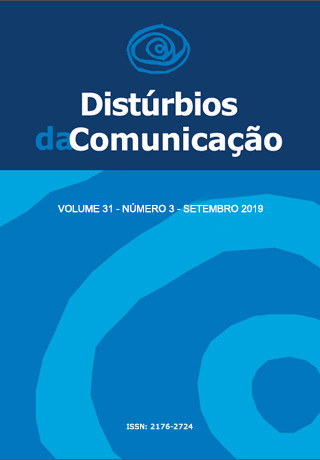Cognitive-linguistic indicators in students with phonological disorder at risk for dyslexia
DOI:
https://doi.org/10.23925/2176-2724.2019v31i3p428-436Keywords:
Child development, Learning, DyslexiaAbstract
Introduction: The phonological disorder is characterized by a disorganization of speech that impairs the development of language, being one of the main risk signs for dyslexia, since the phonological skills that should be developed naturally and spontaneously, for the acquisition of oral language were not acquired. This breakdown in acquisition may hinder the development of other skills, such as analysis, synthesis, segmentation and phonemic manipulation, influencing the acquisition of the phoneme-grapheme conversion mechanism for reading and writing learning. Objective: This study aims to identify the cognitive-linguistic indicators in students with phonological disorder at risk for dyslexia. Method: Participated on this study 40 students from 1st grade of elementary school, aged between 5 years and 11 months to 6 years and 7 months. The students were divided into two groups, GI (20 students without phonological disorder) and GII (20 students with phonological disorder), both groups were submitted to application of the Assessment Protocol of the Cognitive-Linguistics Skills - collective and individual version, composed of skills of reading, writing, phonological awareness, auditory processing and processing speed. Results: The results showed a statistically significant difference for the subtests of all skills evaluated, demonstrating that the students from GI group showed means higher performance when compared to the students from GII. Conclusion: It was concluded that the lower performance of GII in the evaluated skills indicates a cognitive-linguistic limitation of these students when compared to students of GI, showing the signs of risk for dyslexia.Downloads
Download data is not yet available.
Downloads
Published
2019-10-28
Issue
Section
Artigos
License
Copyright (c) 2019 Cláudia Silva, Simone Aparecida Capellini

This work is licensed under a Creative Commons Attribution 4.0 International License.









